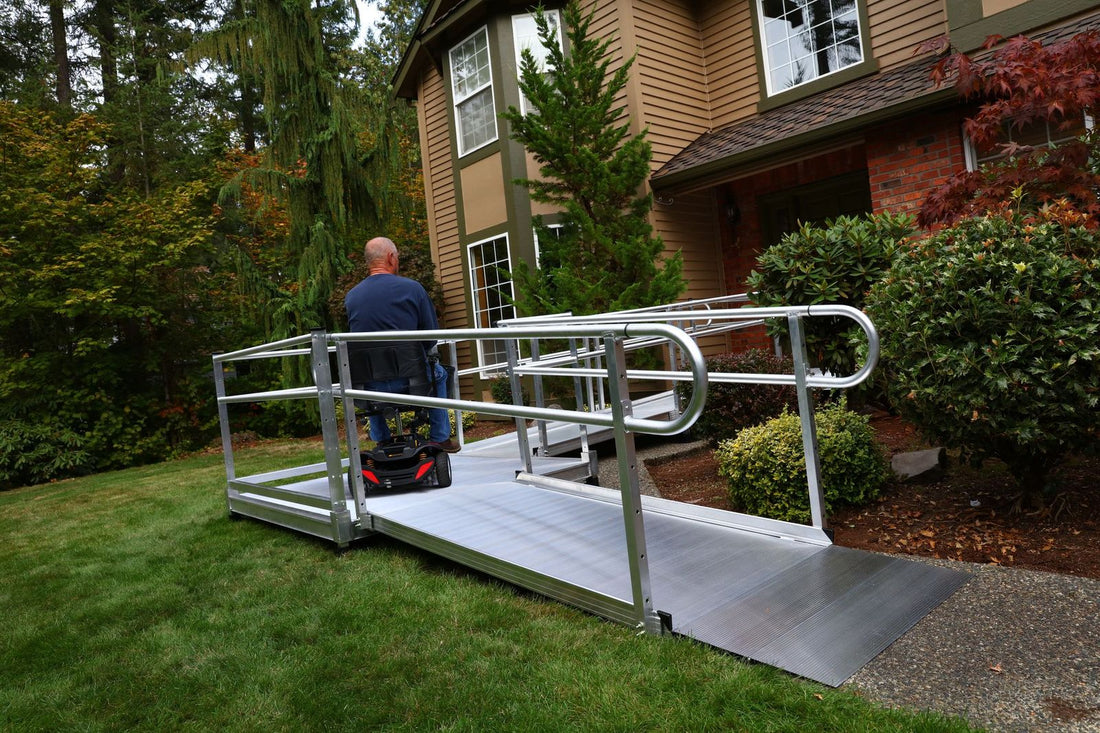For many families, businesses, and organizations, the decision to invest in accessibility products like ramps and accessibility equipment is about more than convenience. It’s about safety, independence, and inclusion. But we also know that accessibility improvements can come with a price tag, and cost is often one of the biggest barriers people face when considering these life-changing solutions.
The good news? There are financing and funding options available that can make accessibility more affordable. Whether you’re an individual, a caregiver, a business owner, or part of a community organization, there are resources to help you cover the cost of ramps and related products. Let’s break down some of the most common options.
Why Investing in Accessibility Is Worth It
Before diving into funding, it’s important to recognize why accessibility products are so valuable:
-
Safety: Ramps and mats help prevent slips, trips, and falls — one of the leading causes of injuries in both homes and workplaces.
-
Independence: Products like modular ramps or portable ramps empower individuals to move freely without needing constant assistance.
-
Compliance: For businesses, accessibility investments help meet ADA, OSHA, and IBC requirements, reducing legal risks.
-
Long-Term Savings: An upfront investment in accessibility often prevents costly injuries, damage, or modifications later.
In short, accessibility products pay for themselves in both financial and human terms. But how can you make the upfront costs more manageable?
Financing Options
1. Personal Loans or Lines of Credit
Personal loans from banks or credit unions can be used to cover accessibility upgrades. A line of credit can also provide flexibility if you anticipate ongoing accessibility needs.
3. Home Equity Loans or HELOCs
For homeowners, using home equity may be a cost-effective way to finance accessibility renovations. Interest rates are often lower than unsecured loans, and improvements may even increase your home’s value.
4. Healthcare Financing Accounts
If ramps or other products are considered medically necessary, you may be able to use a Health Savings Account (HSA) or Flexible Spending Account (FSA) to cover costs. Always confirm eligibility with your provider.
Funding Assistance Programs
1. Veterans Affairs (VA) Benefits
Veterans with disabilities may qualify for grants through the VA, such as the Specially Adapted Housing (SAH) grant or the Home Improvements and Structural Alterations (HISA) grant. These can be used to purchase ramps and other modifications that make homes more livable.
2. Medicaid Waiver Programs
In many states, Medicaid offers Home and Community-Based Services (HCBS) waivers that cover accessibility modifications for individuals with disabilities. Ramps and entry solutions often qualify under these programs.
3. Medicare
While Medicare typically does not cover home modifications like ramps, there are some exceptions if a product is prescribed as “medically necessary.” It’s always worth checking with your provider.
4. State Assistive Technology Programs
Every state in the U.S. has an Assistive Technology (AT) program designed to help residents access necessary equipment. These programs often offer device loan libraries, financial loans, or grants to cover the cost of ramps and accessibility tools.
5. Nonprofit and Community Organizations
Numerous nonprofit organizations, from national groups like Rebuilding Together to local disability advocacy groups, provide financial assistance or even volunteers to install accessibility products at reduced or no cost.
6. Workers’ Compensation and Insurance
If an injury at work creates a need for accessibility modifications at home or in the workplace, workers’ compensation or insurance providers may help fund ramps or entry systems.
Tips for Maximizing Affordability
-
Research Multiple Sources: Don’t rely on a single program. Many individuals combine financing with grants or nonprofit assistance.
-
Document Medical Necessity: Keep records from healthcare providers that explain why accessibility products are essential. This can help with insurance and funding approvals.
-
Ask About Discounts: Some manufacturers and dealers may offer seasonal promotions, veteran discounts, or bundled pricing.
-
Plan for the Future: Choose modular or adjustable products that can grow with your needs, reducing the chance you’ll need to buy replacements later.
How EZ-ACCESS® Can Help
At EZ-ACCESS, we believe that accessibility should never feel out of reach. That’s why we partner with dealers who provide financing options, work closely with veterans’ organizations, and design products that offer long-term value. Whether you’re a family seeking independence at home, a veteran navigating VA benefits, or a business preparing for compliance, we’re here to guide you through your options.
Accessibility is an investment in safety, independence, and inclusion. And while cost can feel overwhelming, there are financing and funding resources available to help ease the burden. From VA grants and Medicaid waivers to financing plans and community programs, no one should have to go without the accessibility solutions they need.
If you’re considering a ramp, mat, or modular access system, start by exploring your financing and funding options. With the right support, accessibility is not only possible, it’s affordable.

